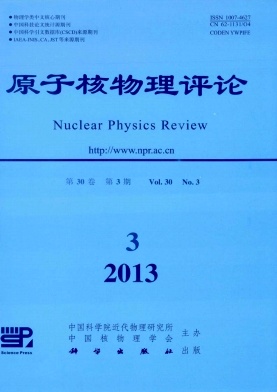Study on Mass Distribution of n+233U Fission with Phenomenological Model
doi: 10.11804/NuclPhysRev.30.03.374
- Received Date: 1900-01-01
- Rev Recd Date: 1900-01-01
- Publish Date: 2013-09-20
-
Key words:
- 233U /
- fission yield /
- mass distribution /
- Th/U fuel cycle
Abstract: Present model was based upon Brosa model, where macro energy,shell effect energy and its decreasing with system temperature were considered and parameterized. 3 sets of model parameters were obtained by fitting to 3 groups of evaluated experimental data, respectively, where the groups were classified by measured method: radiochemistry (RA) method, double kinetic energy (KE) method, and both (ALL). All the 3 sets of parameters could well reproduce the
measured mass distributions on different energies, except the KE set on 14 MeV. The result shows the mass distributions mainly had 4 trend turning points, above which the yield decreasing and below which the yield increasing with energy.The sum of the 1st and 4th (or 2nd and 3rd) point positions was equal to the compound nuclei mass approximately. And the 3rd point was kept at ~132 constantly for different fission systems n+233 U, n+235U, n+233Pu.
| Citation: | LIU Lile, SHU Nengchuan, LIU Tingjin, SUN Zhengjun, WU Xizhen, CHEN Yongjing, QIAN Jing. Study on Mass Distribution of n+233U Fission with Phenomenological Model[J]. Nuclear Physics Review, 2013, 30(3): 374-378. doi: 10.11804/NuclPhysRev.30.03.374 |






 甘公网安备 62010202000723号
甘公网安备 62010202000723号 DownLoad:
DownLoad: